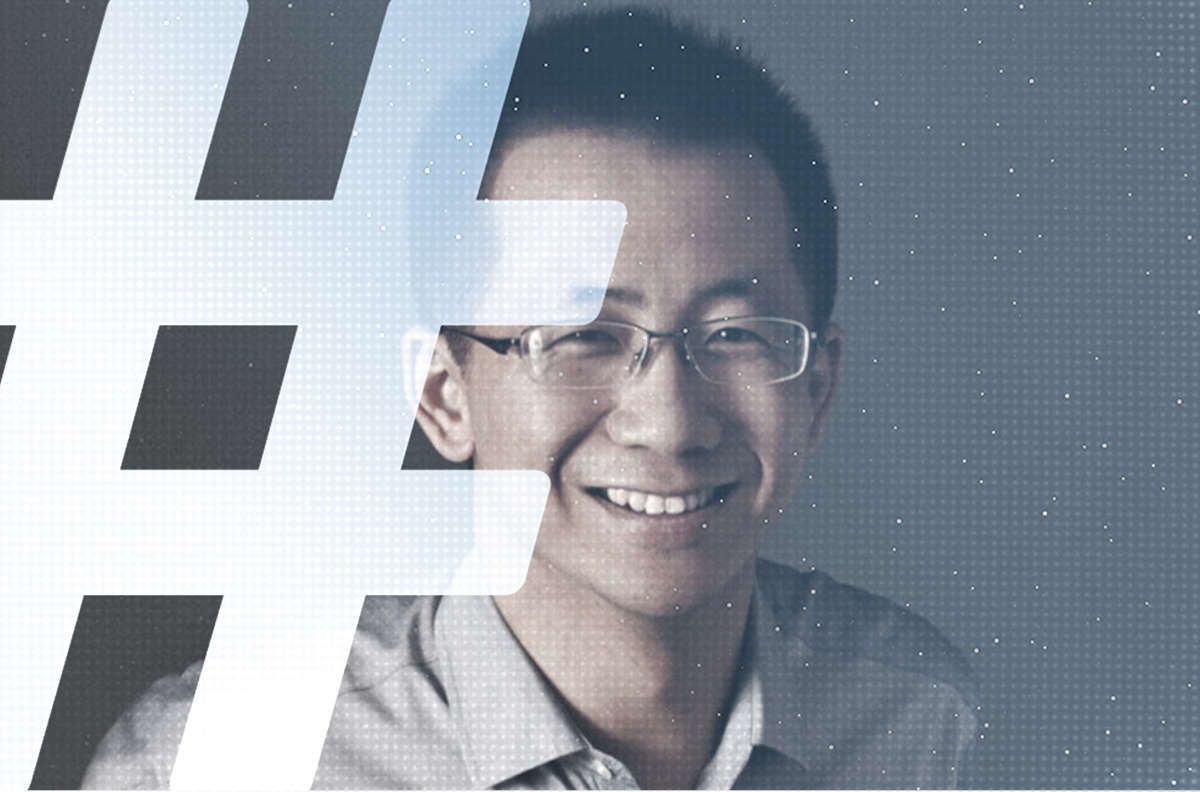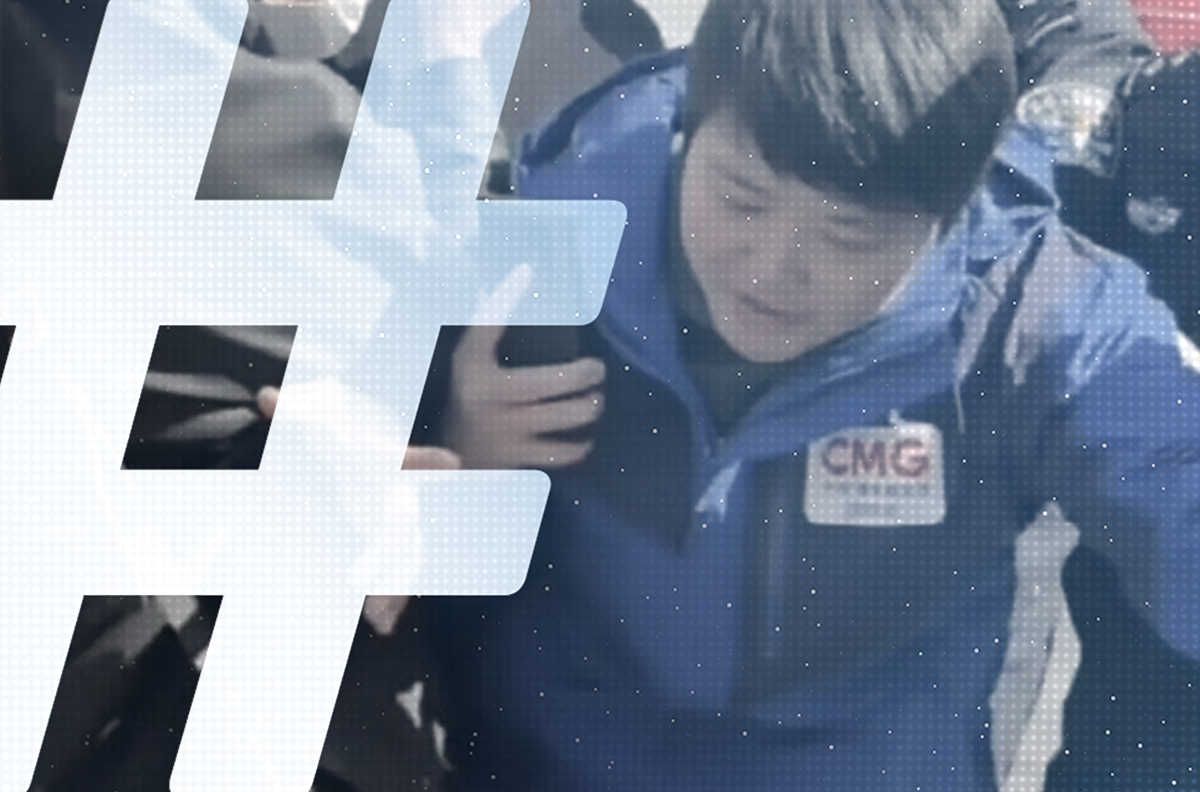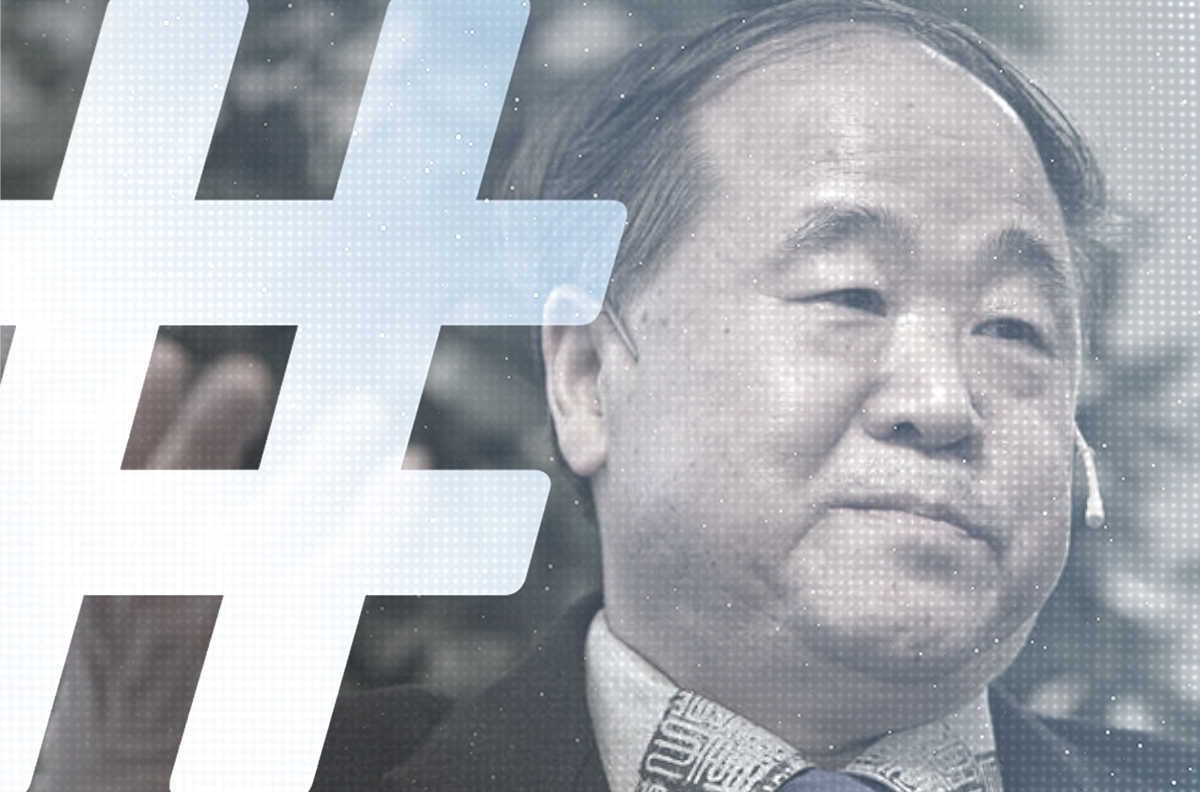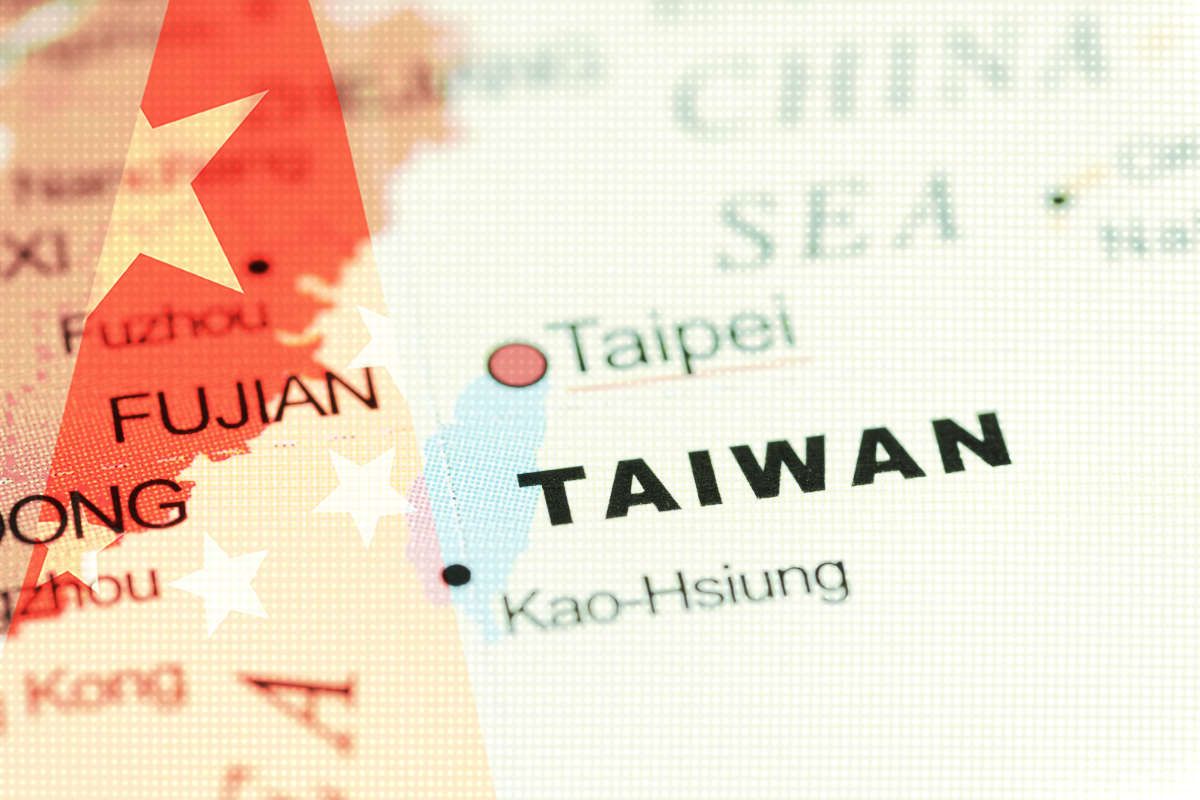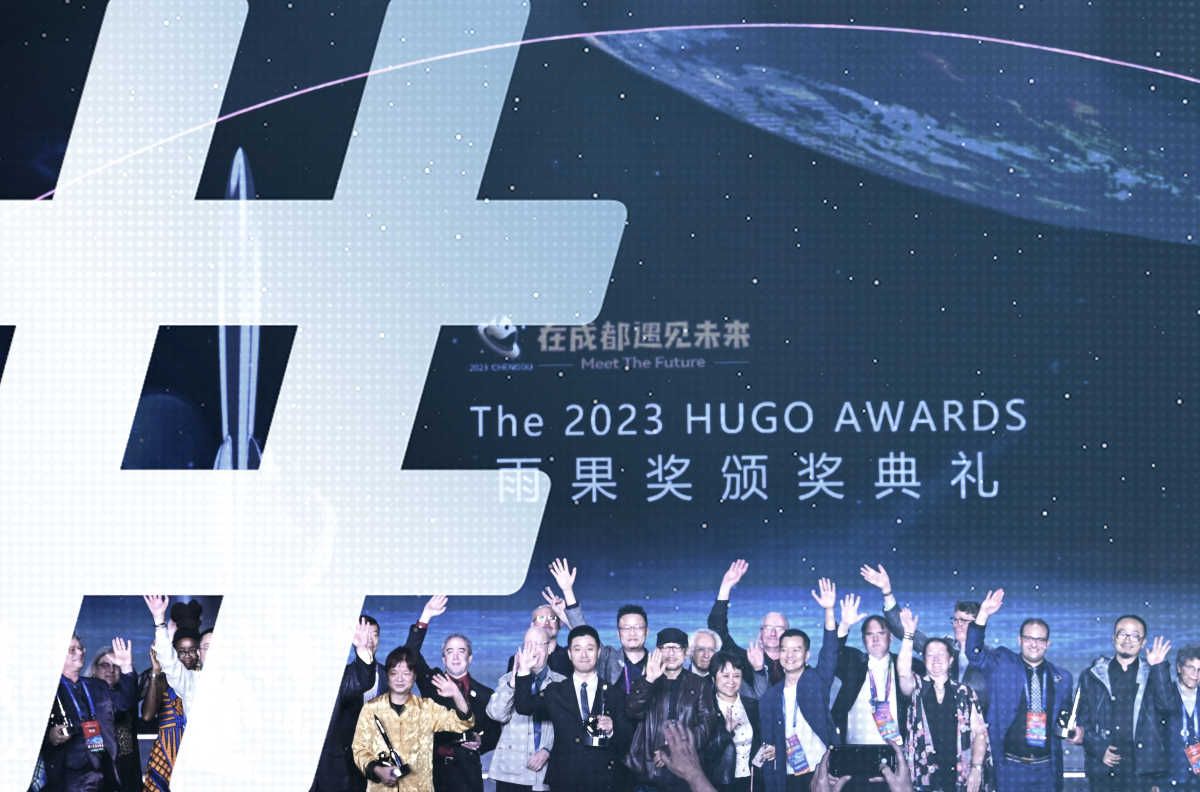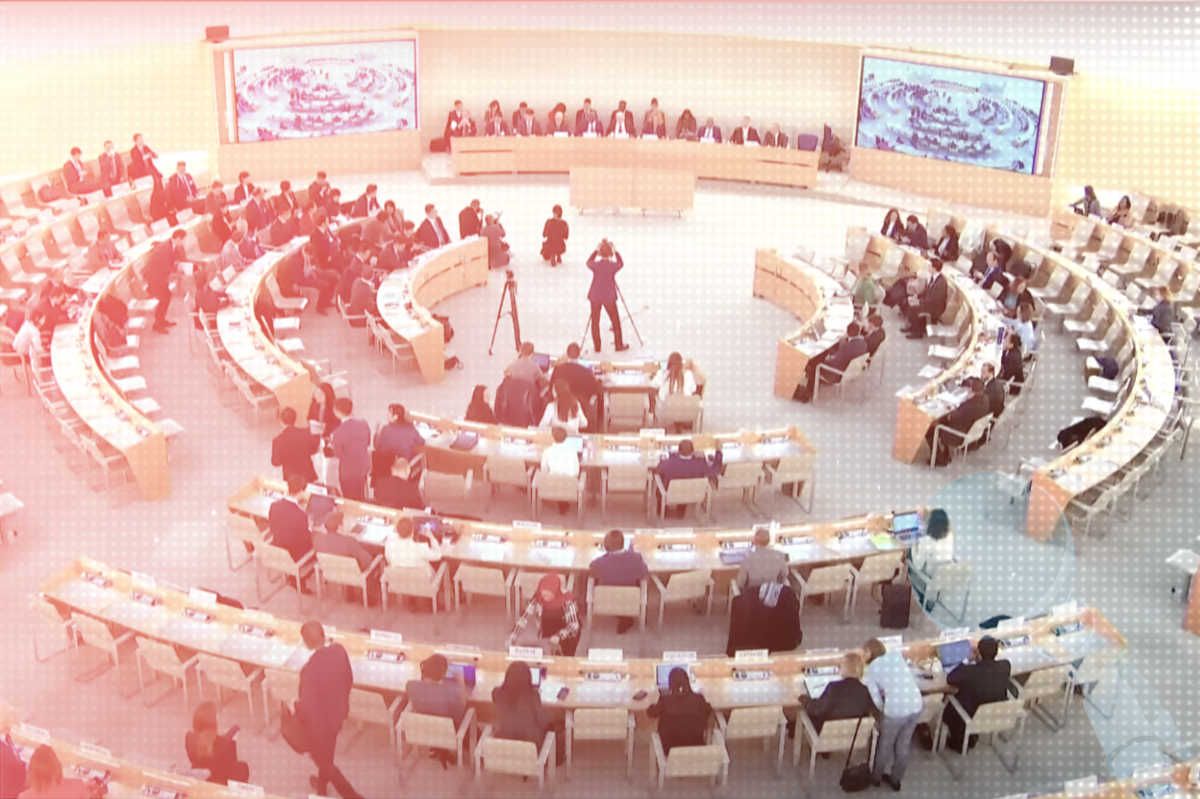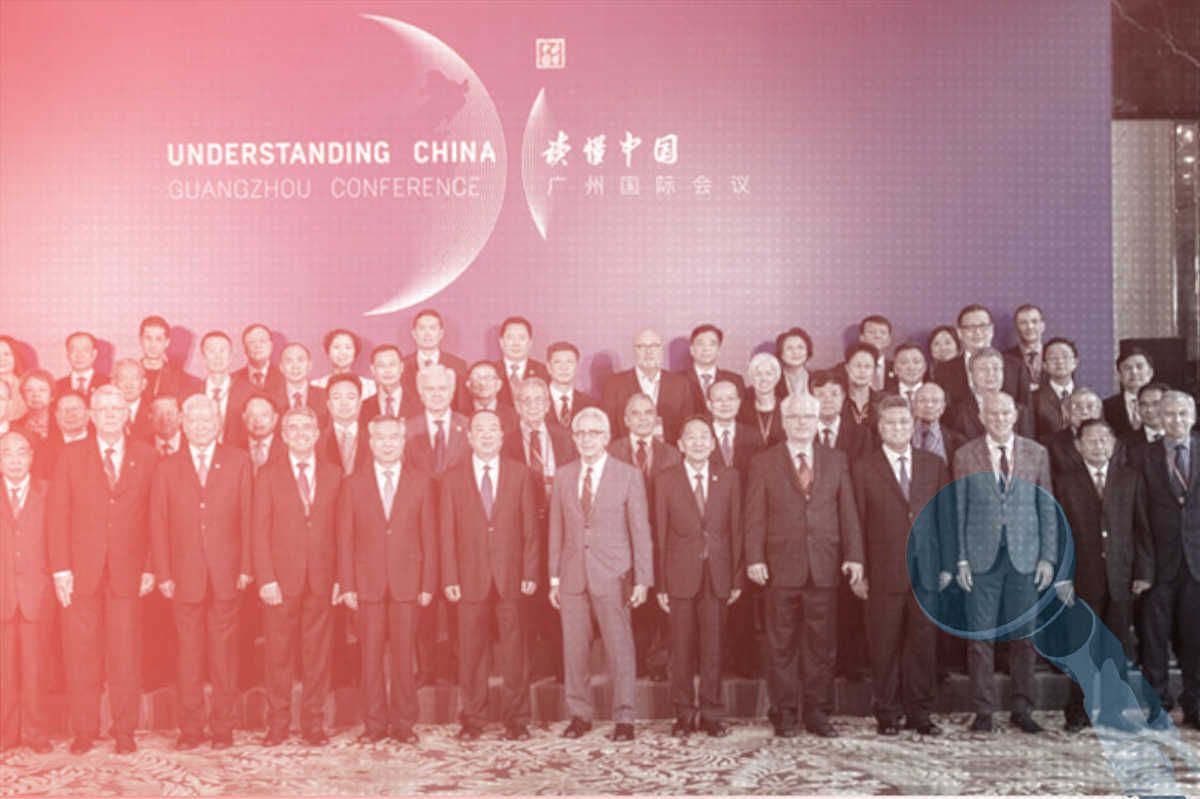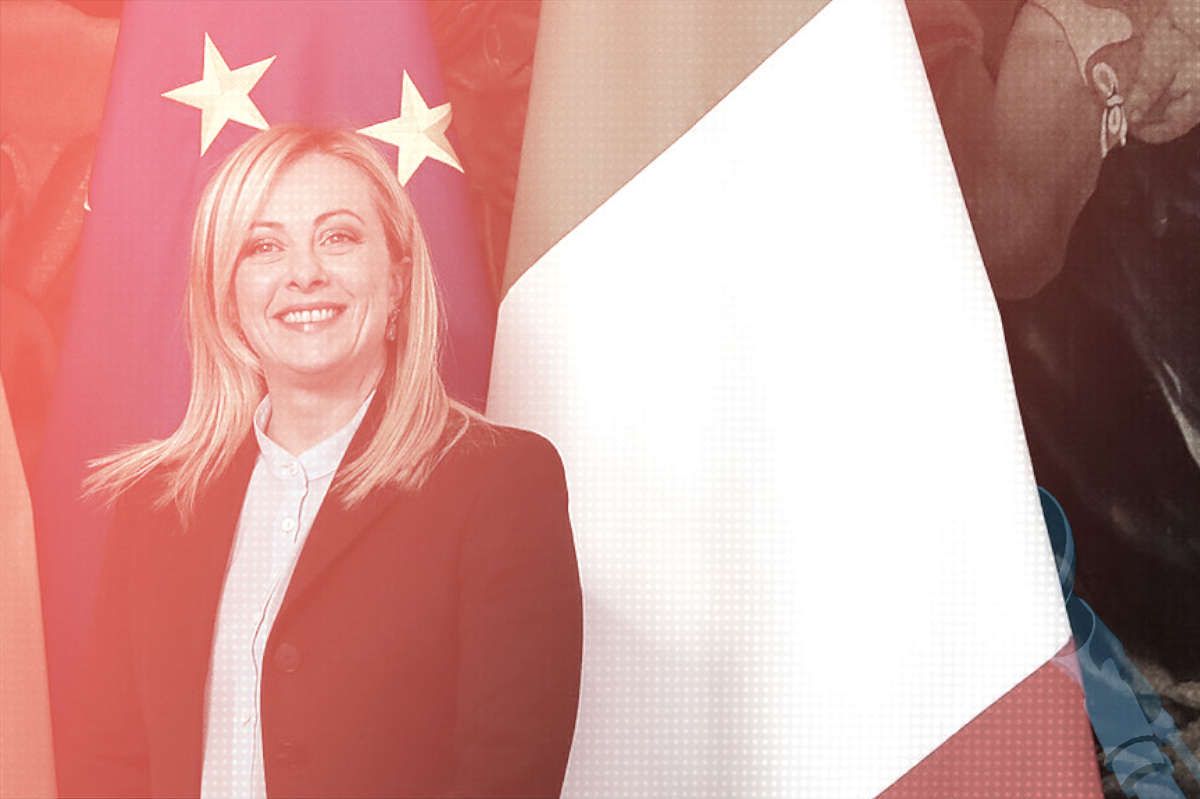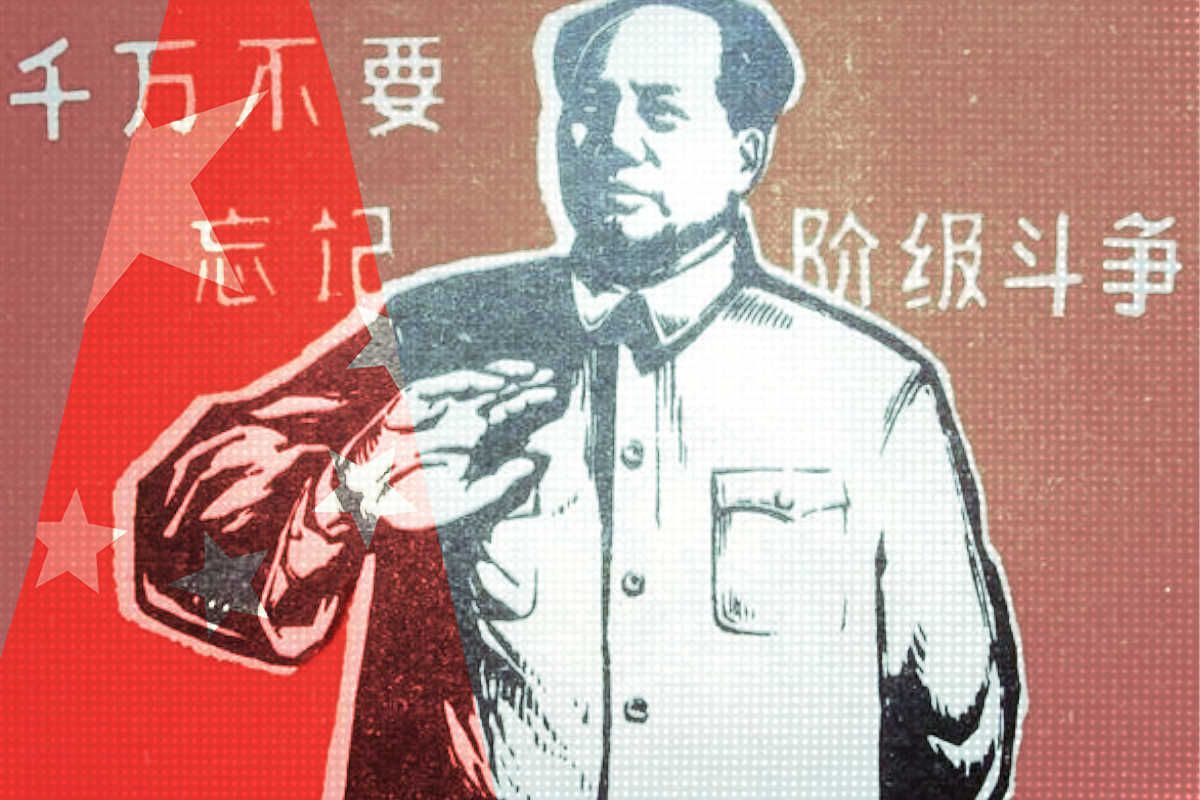Tracking Control
Xi Jinping, Headline Columnist
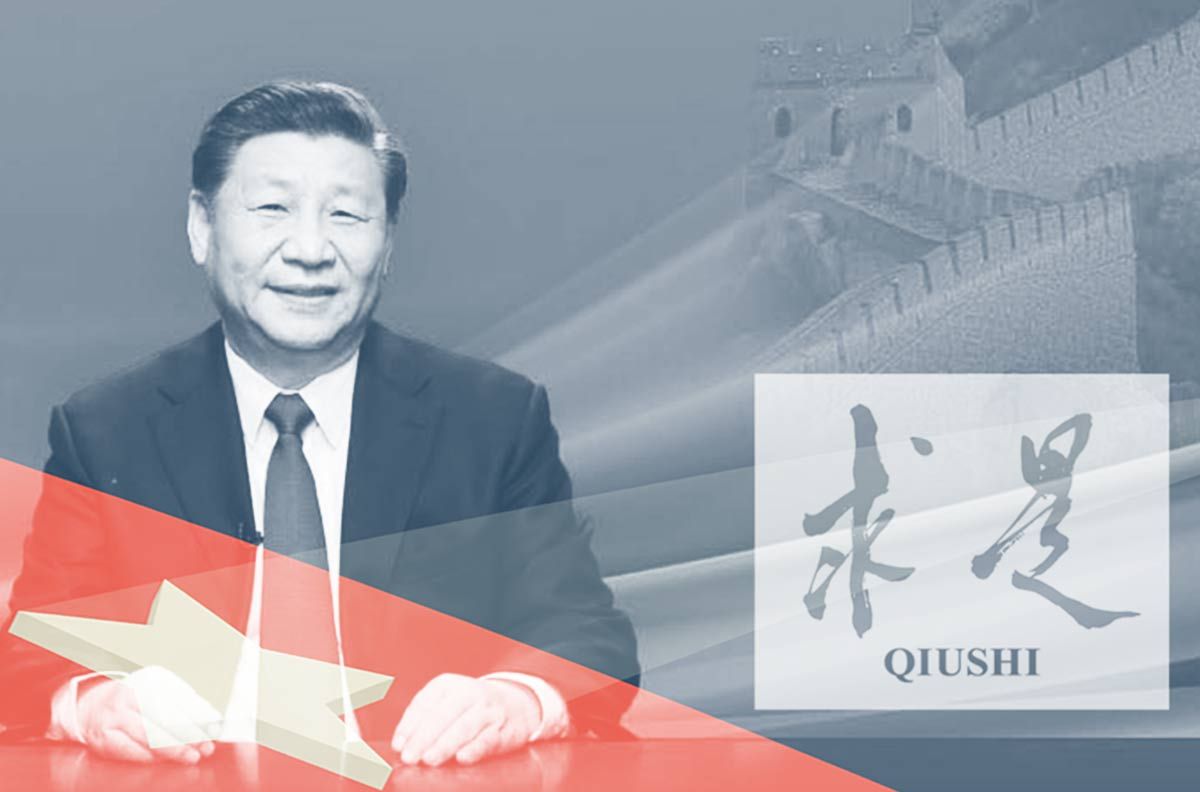
Composite of screenshot of top banner on the website of Seeking Truth and the publication’s official logo, the characters originally penned by Deng Xiaoping in 1988.
Seeking Truth, the Chinese Communist Party’s bi-monthly theoretical journal, rang in the New Year on January 1 with a headline piece from the most prominent political contributor possible – none other than General Secretary Xi Jinping. The article, “Working Together to Build a Community of Shared Destiny for Mankind” (共同构建人类命运共同体), was addressed to an audience of international diplomats. “Ladies, gentlemen and friends,” it began.
Dealing with the topic of international cooperation at the start of a new year, and following a year full of rancor over trade, technology, Covid-19 and other concerns, Xi’s article seemed to point toward a more neighborly future. Its publication was apparently big news as well. All of China’s mainstream media – the word “mainstream,” or zhuliu (主流), referring in a Chinese context specifically to Party-state media – reported on the General Secretary’s “important article” in Seeking Truth.
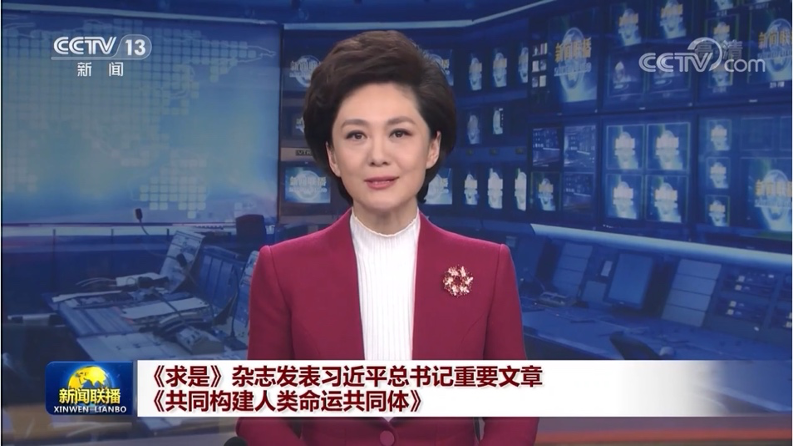
But those who follow Chinese politics closely could not fail to notice something odd. In fact, Xi’s article in Seeking Truth, speaking so hopefully of the future, was a relic from the past. It was a reprinting of the speech he delivered four years earlier, on January 18, 2017, at the United Nations headquarters in Geneva.
Xi Jinping’s January 1 article clues us in to an important and interesting change that has unfolded at Seeking Truth over the past two years – the apotheosis of Xi himself within a core Party journal as a reflection of his paramount status.
Xi on Repeat
Looking closer at Xi Jinping’s headline appearances in Seeking Truth, we find that from 2013 up to now, the journal has published 68 of his speeches. But this regular arrangement was apparently not formed until the end of 2018, before which time only about two or three articles per year from Xi had appeared in Seeking Truth.
Since the start of 2019, Xi has provided the lead article in every single issue of the Party journal, without exception. The following graph plots the total number of articles with Xi Jinping’s byline appearing in Seeking Truth each year since 2013, his first full year as general secretary.

These numbers also include one special case, an issue of the journal in which three of Xi’s speeches appeared back to back, right at the top of the table of contents. This issue was released on September 30, 2020, on the eve of China’s National Day.
None of the National Day articles published in the September 30 issue of Seeking Truth were drawn from current or recent speeches. All of them, in fact, had been delivered for the 70th anniversary of the founding of the People’s Republic of China in 2019, the first two speeches at major commemorative events, the third an address to honor “outstanding people” (杰出人士) who were deemed to have made major contributions to the nation.

Xi’s speeches do not just appear in the publication as ornamental flourishes, or as routine nods to the leader’s ideas. They are meant to lead and set the tone for each issue, placing Xi himself at the center of the Party’s theoretical life. Following the central Xi article at the top of the table of contents are supporting articles, usually commentaries selected by the editorial office, that interpret the topic concerned and provide supporting materials.
The January 1 edition of Seeking Truth, for example, deals chiefly with China’s international role, centering on the Xi-era foreign policy concept of “building a community of shared destiny for mankind,” or renlei mingyun gongtongti (人类命运共同体), which first emerged the political report to the 18th National Congress of the CCP in November 2012, delivered by Hu Jintao but having a strong imprint of Xi’s policy priorities. A hint of the phrase appeared in the 2007 political report by Hu Jintao, as the phrase “community of shared destiny” (命运共同体) was used to refer to relations between the PRC and Taiwan. Since September 28, 2015, when Xi Jinping addressed the United Nations General Assembly (text in Chinese) and spoke of the need to “forge a new partnership of win-win cooperation and a community of shared future for mankind,” the phrase has been central to China’s insistence that in the pursuit of its own development it seeks to promote the common peaceful development of all countries.
However, the Chinese notion of a “community of shared destiny for mankind” has had a mixed reception globally, and we can see some signs of this is the question of the translation of the phrase itself. Note that in the English translation of the UN speech above, the phrase appears as “community of shared future,” avoiding the reference to “destiny,” or mingyun (命运), which remains closer to the Chinese original. In fact, earlier references in English to Xi’s foreign policy phrases used the word “destiny,” as when Xi Jinping addressed Indonesia’s parliament in October 2013. “Destiny” appears again in this December 2013 speech by Chinese Foreign Minister Wang Yi.

But perhaps sometime after Xi Jinping’s speech to UNESCO in March 2014, Chinese officials seemed to understand from their interactions internationally that the notion of “destiny” might invoke ideas of expansionism and fascism (such as, for example, Hitler’s notions of “shared destiny,” and common myth.) The phrase in English persisted through the latter half of that year and into 2015, as in Premier Li Keqiang’s reference to relations with Malaysia. It was apparently not until Xi addressed the UN in September 2015 that “future” finally made its debut as the preferred translation.
In the January 1, 2021, issue of Seeking Truth, Xi’s 2017 Geneva speech is meant to inspire a deeper elaboration of the “community of shared destiny” as the core of China’s foreign policy, now under the flying banner of “Xi Jinping Thought on Diplomacy” (习近平外交思想). Xi’s “article” is followed by a contribution from the journal’s editorial office on the “China plan” (中国方案) as a means of breaking through the world’s problems and challenges, and another from Yang Jiechi, a Politburo member who chairs the Central Commission for Foreign Affairs.
Similarly, a May 2020 issue of Seeking Truth ran as a signature article a 2019 speech called “Concerning the Problem of Addressing Weaknesses in Building a Moderately Prosperous Society,” chosen to underscore the CCP goal of achieving a so-called moderately prosperous society during the first half of 2021. This was followed by an editorial office article called “Running the ‘Last Mile’ Toward Full Building of a Moderately Prosperous Society,” which summarized the main points of Xi’s speech and addressed related trends in 2020.
Seeking Promotion
Xi Jinping’s contributions as Seeking Truth’s headline columnist are also treated, as previously mentioned, as major official news events. On each day that corresponds to the release of a new issue of the journal, the People’s Daily generally highlights the general secretary’s “important article” on its front page, in a prominent position. The front page below, from the January 2, 2021, edition of the People’s Daily, shows Xi’s article just below the masthead. The headline reads: “’Seeking Truth’ Journal Issues Important Article by General Secretary Xi: Working Together to Build a Community of Shared Destiny for Mankind.”

As Xi has come to dominate Seeking Truth, appearances by other members of the Politburo Standing Committee (PSC) have occurred less frequently – a trend at odds with what we could observe in the Hu Jintao era.
In the period from 2003 to 2012, Hu Jintao speeches published as articles in Seeking Truth each year were consistently four or less, making for a total of just 24, less than half that of Xi Jinping in just eight years. In Hu’s time, a top spot was always reserved in the first issue each year for a speech by Hu Jintao, and from 2013 Xi Jinping initially kept to this tradition. But aside from Hu, other PSC members at that time could be readily seen in the pages of the journal – including Wu Bangguo, Wen Jiabao, Jia Qinglin, Li Changchun, and so on.
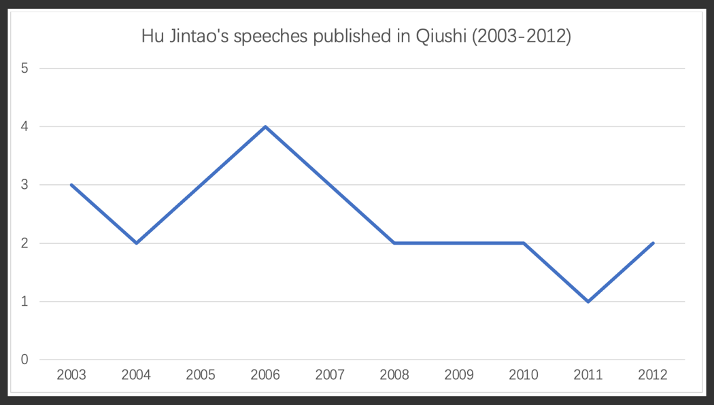
Going back to the Jiang Zemin era, Jiang’s own appearances in Seeking Truth are similar in frequency to Hu Jintao. The difference is that there appears to be no rule or regularity to Jiang’s articles. In many cases, they are associated with major events, and in that sense they are tied more closely to the news cycle.
Of the two Jiang speeches that appeared in the journal in 1999, for example, the first deals with the NATO bombing of the Chinese embassy in Belgrade, Yugoslavia, and the other addresses the 50th anniversary of the founding of the PRC.
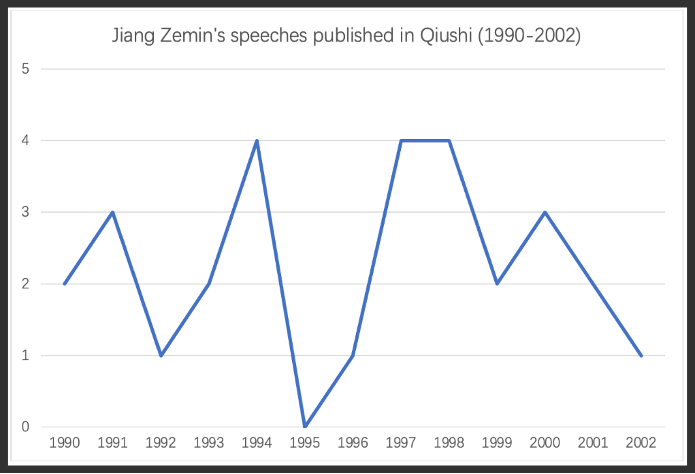
There was only one case when two Jiang Zemin speeches appeared in a single issue. This was in 1997, and both dealt with Hong Kong’s return to China on July 1 of that year – both speeches having been delivered on the same day in Beijing and Hong Kong, and both printed the next day in the People’s Daily.
There is no doubt that no top leader in modern China since Mao Zedong has had his thoughts and theories as strongly publicized as Xi Jinping. And a look at the frequency of top-leader contributions to Seeking Truth is a strong visual illustration of this fact.
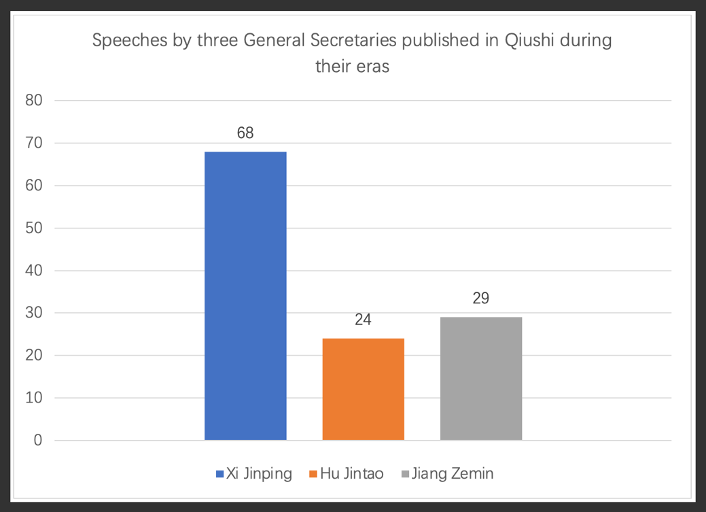
Even as the COVID-19 pandemic has impacted economic development in China, it has not upset the continued consolidation of Xi’s status as the absolute center of an increasingly centralized system.





